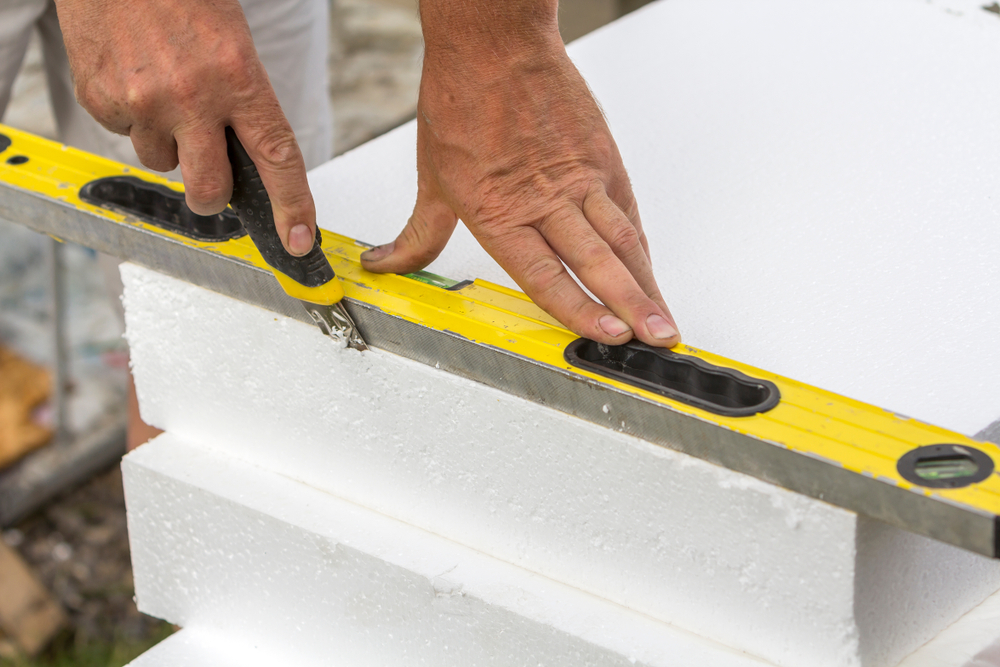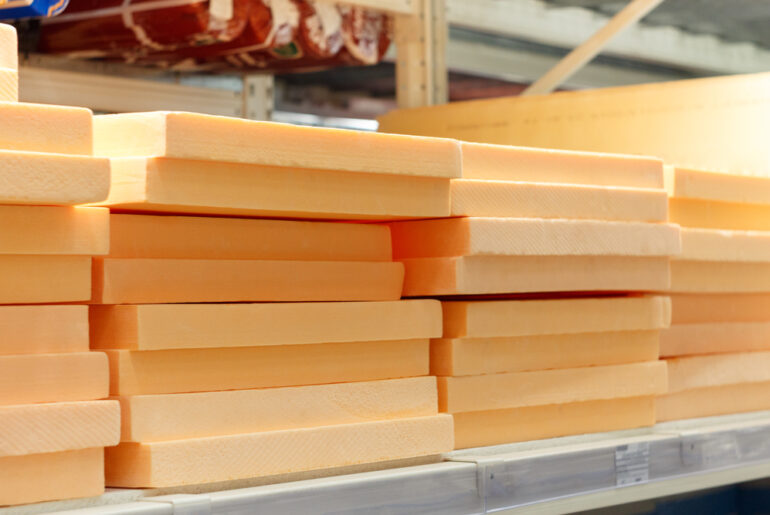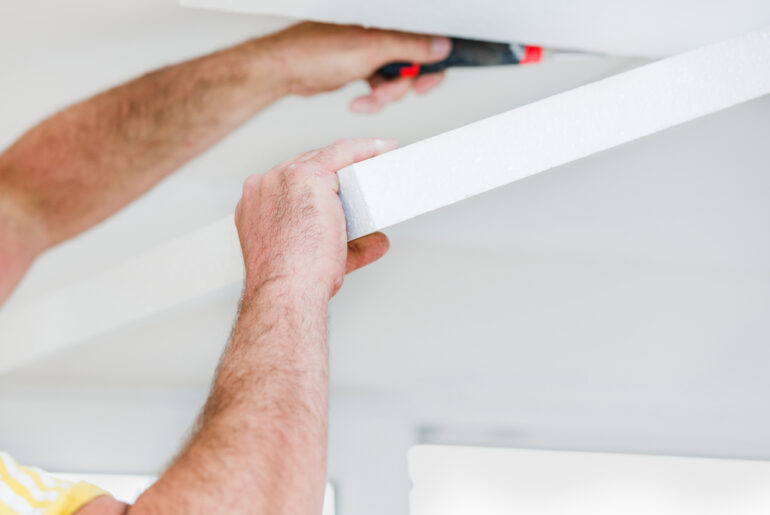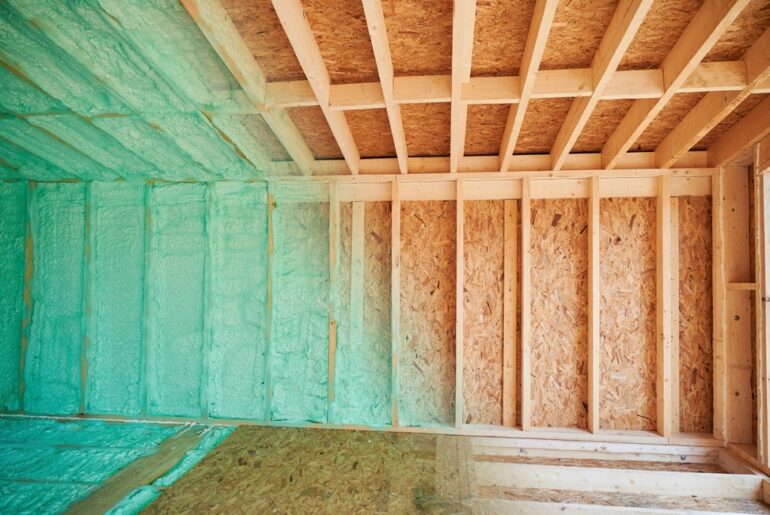Rigid foam insulation is popular because it is versatile, light to handle, simple to use and an effective insulator. It is straightforward to install, and you don’t need specialist tools.
But there are ways to make installation better, resulting in less waste and improved economy. Make sure you have a good tape measure, a sharp craft knife, a decent saw, good lighting, and a safe area for cutting your boards.
Don’t forget to pick up some good quality cut resistant gloves too, as part of your kit. You only need to be cutting the foam insulation board and nothing else!
Here are our tips for cutting foam insulation boards like a pro.
Tools
We all know the old saying ‘measure twice, cut once,’ and there’s no truth like an old one. Always double check your measurements and ensure the tape measure you are using is clearly marked. Rusted or paint covered tape measures should be replaced.
- Personal protective equipment (PPE) should always be considered before you start. Cut resistant gloves are essential along with appropriate eye protection. With some rigid foam boards it is advisable that a respirator, or PP3 mask is worn. Always check the manufacturer’s recommendations.
- Use a fine marker pen to mark up where a board is to be cut. A pencil will be too fine and oftentimes not show up on foam insulation board.
- An extendable craft knife with a set of replacement blades is an excellent tool for cutting rigid foam boards. Make sure you have plenty of replacement blades so that there is no danger of running out before the project is done.
- You need to have a good fine tooth saw on hand for when a craft knife won’t do. We’ll detail this situation shortly.
- If you can’t see what you’re doing then it’s likely you will not be able to cut effectively. If you are working outside then it will be less of an issue, but if you are cutting indoors, in a basement or attic situation, then adequate task lighting is essential.
- RIgid foam insulation comes in a wide range of different colors depending upon the manufacturer. Some boards are green or purple, pink, or white and then there is silver backed polyiso. It is a good idea to pick up a contrasting marker pen as a carpenter’s pencil will fail to make much of an impression!
Finally, make sure that wherever you are working is safe. A tidy site is a safe site. Make sure there are no trailing cables underfoot and that the cutting area is stable and well ventilated.
Tips to Boost Efficiency And Precision
Minimizing Waste
When measuring the boards, always aim to reduce the boards by as little as possible.
For example, when fitting out a basement wall it is always a good idea to fit the boards vertically. If an 8-foot board is cut down to 7 feet to fit between the floor and ceiling, then use the 1-foot off-cut and cut the next board at 6-foot. Using this method, you will have almost no waste.

Using a Craft Knife With Polyiso and EXP
Polyiso boards and Styrofoam extruded insulation boards are ideal for cutting with a craft knife. Mark either end of the cut and use a metal straight edge to cut against. You can use a long level or a length of metal stud, just make sure that whatever you use does not bend or distort over a longer distance.
- Mark up a straight line with at least three measured points in case of inaccuracy, accidental or otherwise.
- Some fitters suggest that you use a tape measure as a running jig to cut a board. This involves holding a knife blade hard against the end clip of a tape measure with one hand while drawing the other hand against the board edge at the required, measured distance. A good trick that comes with practice!
- Unless you are cutting a thin board, say half to one inch, then do not try to finish the cut in one pass. The resistance will be too great, and you will have less control over the cutting blade. You can also use a fine-tooth saw to cut polyiso or Styrofoam rigid board insulation, and it is recommended for any board thicker than two inches.
Another old tradesman’s saying is ‘always keep your hands behind the blade,’ which means, in practise that you should ensure the hand that is not holding the knife should not be in the path of the knife, and that your body should also be to one side, in case the blade slips or breaks. Craft knives are incredibly sharp and can do an awful lot of damage.
Using a Saw with Polystyrene
Polystyrene boards will make a mess whatever you use to cut them, and they will make more of a mess if you try to use a craft knife. For best results a fine-tooth saw will give the accurate cut required and deliver the least amount of crumbly polystyrene beads.
Keep a vacuum cleaner close by when cutting polystyrene because it will stick to your clothes, your boots, exposed skin, and all of your tools. Use the hose attachment of a vacuum cleaner to clean up before you either go on a break or finish up for the day.
Cutting Difficult Areas
For cutting around circular outlets you can use a coping saw, or a reciprocating saw in thicker boards. Foam board insulating material could clog up an electric jigsaw, the friction caused by the blade can melt the insulation, which gets sticky and polystyrene does not work well with any powered handheld cutting tool.
When cutting around existing ducts or conduit use the slot method below to get as good a fit as possible. While it is always best practice to cut as tight to ducts or conduit as possible, you can always use a can of spray foam to make up the difference.

When to Use a Table Saw
On larger projects a table saw might be appropriate when cutting large amounts of rigid foam insulation board. In this case the cutting will have to be done either outside, in a well-ventilated area, or with the proper dust extraction tool fitted in place.





